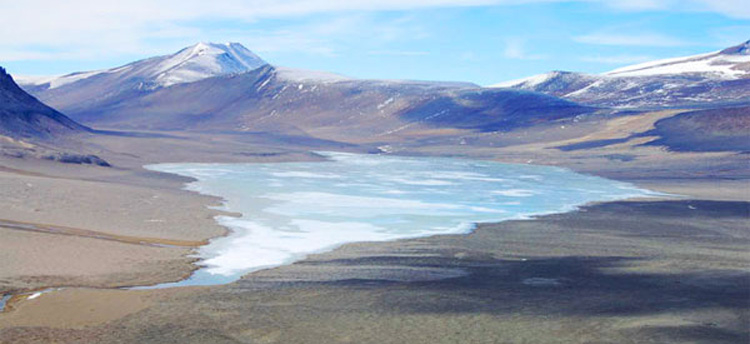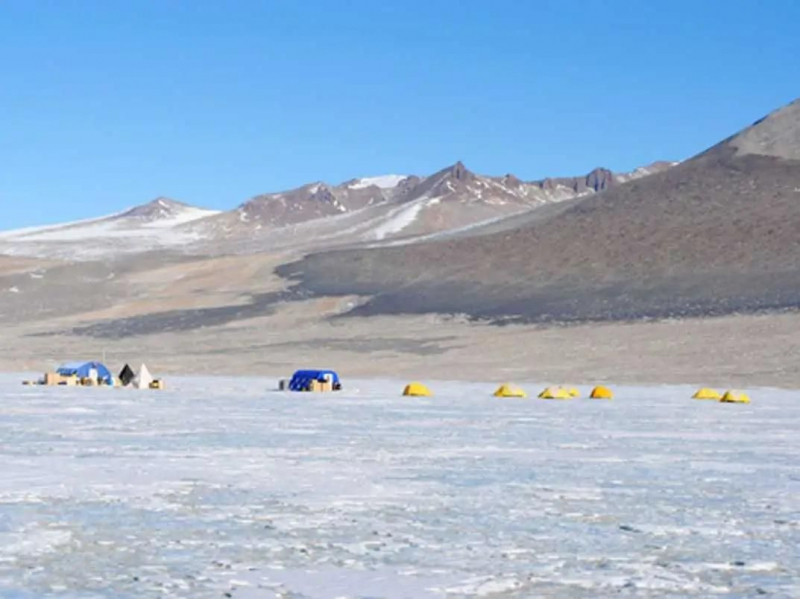Lake Vida
Start in Lake Vida if you were going to compose a horror film about Antarctica. A closed-basin endorheic lake, Lake Vida is one of the bigger lakes in the McMurdo Dry Valley area. The lake's permanent surface ice, which reaches a depth of at least 21 meters, is the thickest non-glacial ice on the planet (69 ft). Brine, which is seven times as salty as saltwater, gets soaked into the ice at deep. For thousands of years, the ice cover has protected the salty brine from outside air and water, creating a time capsule for ancient DNA. Lake Vida is the only lacustrine ecosystem on Earth with this particular mix of lake characteristics.
A 2,800-year-old bacterium that had been frozen in water was revived and defrosted by scientists in 2002. In Lake Vida, several microscopic life forms have been discovered frozen, which might be a sign of the longevity of life on other worlds. The microorganisms sprang to life again after freezing, and they multiplied and flourished. Lake Vida is currently recognized as a destination for study into Earth's climate and life under harsh conditions, especially the fauna that may have lived on Mars, as a result of this finding and the freezing mechanisms generating Lake Vida's ice-seal. For this kind of research, the unmanned Lake Vida Meteorological Station continuously tracks the local climate.










